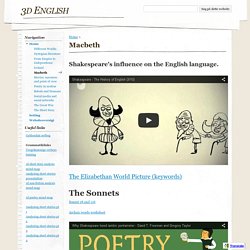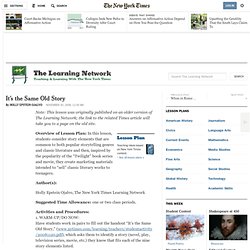

A Graphic Sonnet - a graphic interpretation of Shakespeare's Sonnet 130 - Literature. For Alchemy Festival's Sonnet Exchange Event Bangladeshi graphic novelist Nuhash Humayun has produced a graphic interpretation of Shakespeare's Sonnet 130.

Nuhash Humayun is an artist, writer and filmmaker with a compulsive love for making things up. Best known for his zany alternative comic strip Hesh, Nuhash’s cartoon creations have leaped off the pages of Bangladesh’s leading English daily, spawning everything from apparel to greeting cards. Besides his work as a cartoonist and illustrator for The Daily Star, The Dhaka Tribune, Bdnews24 and various other newspapers across the country, Nuhash is a strong advocate for artistic and creative awareness amongst children, conducting several talks and workshops including You Are Your Art: Identities through Graphic Storytelling hosted by British Council Bangladesh, British Council UK and The RichMix Center and Growing Up Drawing organized by The Hay Festival Bangladesh. Read Kaiser Haq's response here.
Read Daljit Nagra's response here. Shakespeare. Reading ‘Macbeth’ Through the Lens of Ferguson. Whom do we trust, and why?

This was the question Michael Roethler, an instructional coach in Illinois, posed for a class of sophomores reading “Macbeth.” But first, to help them grapple with it in a context they cared about, he applied it to events surrounding the death of Michael Brown in Ferguson, Mo. Below, his step-by-step process, including the worksheets, photos, articles and editorials he used. Do you teach with The Times? Tell us about it here. Teacher: Michael Roethler, Instructional Coach Institution: Glenbard North High School, Carol Stream, Ill. Macbeth - 3d English. Shakespeare's influence on the English language.

The Sonnets Macbeth To better understand what's going on in Macbeth, read this plot summary before you watch the video. The Elizabethan World Picture keywords - Google Slides. Shakespeare - The History of English (3/10) Lessons Worth Sharing. How to make Shakespeare easy for English language learners. Have you ever had difficulty relating Shakespeare to learners of English?

Tutor and resource writer Genevieve White comes to the rescue, in time for Shakespeare Day and English Language Day today. Last year, I wrote an article extolling the joys of teaching Shakespeare to learners of English and outlining the reasons why teachers should bring the Bard into the classroom. Some of the comments I received on this post suggested that the linguistic challenges presented by sixteenth-century English are just too great to overcome.
It is true that Shakespeare’s texts may present difficulties for contemporary readers, particularly those who do not have English as a first language. Luckily, however, there are a number of ways in which we can reduce the language barrier between our learners and Shakespeare’s greatest work. Make it attractive from the start Begin by piquing your learners’ interest. In the past, I have introduced my learners to the story and its characters with a trailer. 1. 2. 3. Macbeth Summary - Literature Study Guides - Flocabulary. Why Shakespeare loved iambic pentameter - David T. Freeman and Gregory Taylor. Teaching Resources, Classroom Resources & Lesson Plans - TES Resources. Secondary: English: Post 16 Drama: Plays by Title: Othello teaching resources. -Folger Shakespeare Library. It's the Same Old Story. Note: This lesson was originally published on an older version of The Learning Network; the link to the related Times article will take you to a page on the old site.

Overview of Lesson Plan: In this lesson, students consider story elements that are common to both popular storytelling genres and classic literature and then, inspired by the popularity of the “Twilight” book series and movie, they create marketing materials intended to “sell” classic literary works to teenagers. Author(s): Holly Epstein Ojalvo, The New York Times Learning Network Suggested Time Allowance: one or two class periods. Activities and Procedures: 1. Element 1: “Wuthering Heights”; “Othello”; “Romeo and Juliet” (“Dawson’s Creek”; “Grease”; “Titanic”; “The Notebook”). After all of the classic literary examples have been shared, ask students whether they are surprised to see that some of their favorite stories have a lot in common with classic literature. 2. 3. 3.
'That Time of Year Thou Mayst in Me Behold' A Tale Full of Sound and Fury, Signifying . . . Everything? Student Crossword. Shaking Up Shakespeare: Reaching the Shakespeare-Averse With Adaptations. Sara Krulwich/The New York TimesCondola Rashad and Orlando Bloom in “Romeo and Juliet.”

Go to related article » Overview | Why study Shakespeare? What role can his work play in teaching us about ourselves in the 21st century? In this lesson, students will examine their preconceptions about Shakespeare and his work. Then, after reading one theater critic’s case for reading and seeing Shakespeare this year, they will use The Times to explore adaptations of a Shakespearean play they are currently studying.
Materials | Computers with Internet access; copies of the article “Too Much Shakespeare? Warm-Up | Ask students to form two concentric circles, with those in the inner and outer circles facing one another, so that each student has a partner. Ask one of the following questions, giving pairs two minutes to talk (one per person), then ask the outer circle to rotate, so students have new partners, and ask another question.